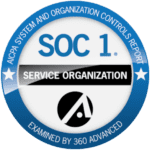In the whirlwind of the global economy, the supply chain landscape is constantly evolving.
Innovations, disruptions, and shifts in consumer behavior create waves that ripple through and transform the way goods and services are produced, distributed, and consumed. This year, particularly, we’ve seen a significant push for resilience, sustainability, and digitalization in supply chain operations.
Here, we dissect the top ten supply chain trends that are dominating 2024, exploring the implications of each and how businesses are leveraging these changes to stay ahead of the curve.
1. Hyper-Automation Takes the Helm
The synergy between humans and machines is reaching a new peak in supply chain management. Hyper-automation, which entails the use of advanced technologies like AI, machine learning, and robotics to automate complex tasks, is now being harnessed to optimize production, minimize errors, and improve labor efficiency.
This technology has had significant impacts on various industries, from manufacturing to logistics.
For instance, predictive analytics and AI are now being used to forecast demand with unprecedented accuracy, allowing companies to optimize inventory levels and minimize warehousing costs.
2. Blockchain and the Quest for Supply Chain Transparency
Blockchain technology, recognized for its potential to create transparent and immutable ledgers, is making waves in supply chain management. From tracing the origin of products to ensuring the ethical and ecological impact of suppliers, blockchain provides a foundation for trust and transparency like never before.
Consumers are increasingly demanding to know the history of the products they buy. In response, companies are turning to blockchain to create verifiable records of every step in the supply chain, allowing consumers to access this information with a simple scan of a QR code.
3. Supply Chain Adaptability in the Face of Disruption
The pandemic of 2020 highlighted the vital need for supply chain adaptability. In 2024, resilience remains paramount as volatile weather patterns, geopolitical shifts, and other unforeseen events continue to disrupt global supply chains.
Businesses are now focusing on building more agile supply chains that can quickly adapt to disruptions. This agility includes having backup suppliers in different geographic regions, using flexible manufacturing processes, and maintaining higher levels of critical inventory.
4. The Surge of Direct-to-Consumer (DTC) Models
Consumer trends continue to gravitate toward direct-to-consumer (DTC) purchasing models, with an increasing number of brands bypassing traditional retail in favor of selling directly to customers.
This trend has led to a surge in smaller, more frequent shipments, putting pressure on supply chain operations to be faster and more flexible. The DTC model also brings challenges to supply chain infrastructure.
Companies are having to rethink distribution networks, last-mile delivery options, and inventory management to meet the expectations set by DTC brands. Many businesses are using advanced transportation management system software to overcome these challenges.
5. The Rise of Sustainable and Ethical Supply Chains
Sustainability is moving from a corporate responsibility initiative to a core value in supply chain operations. Consumers are not just looking for quality and price; they also want to support businesses that adhere to ethical and environmental standards.
Supply chains are adapting by integrating more sustainable practices, such as sourcing from eco-friendly suppliers, optimizing transportation routes to reduce CO2 emissions, and implementing circular economy models that reduce waste.
6. Supply Chain Digitization for Smarter Operations
The digital transformation of supply chain operations is accelerating, driven by the need for real-time visibility and control. Businesses are increasingly utilizing cloud-based platforms, IoT devices, supply chain network optimization software, and big data analytics to optimize their processes.
The result is a supply chain that is smarter and more responsive. From using IoT sensors to track the condition of perishable goods in transit to employing predictive maintenance algorithms in production facilities, digitization is turning supply chains from a cost center into a source of competitive advantage.
7. The Shifting Sands of Globalization
The tide of globalization is starting to ebb as companies become more aware of the risks and challenges associated with depending on a globalized supply chain. In response, there is a growing trend towards nearshoring and restoring, where production is moved closer to the end consumer.
This shift is influencing everything from manufacturing strategies to logistics networks. It is also fostering the development of more regional supply chains that can be more easily managed and adapted to local market conditions.
8. Enhanced Supply Chain Visibility with IoT and RFID
The Internet of Things (IoT) and Radio-Frequency Identification (RFID) technologies are providing supply chain managers with unprecedented levels of visibility and control over their operations.
By attaching these devices to products, companies can track their movements in real-time and gather data on their condition and location.
This increased visibility enables better inventory management, more accurate demand forecasting, and the ability to detect and address issues before they escalate. It’s a game-changer for supply chain efficiency.
9. The Role of Robotics in Warehouse and Fulfillment
Robotics is not just affecting production; it’s also transforming warehousing and fulfillment. With the rise of e-commerce, the demand for fast and accurate order fulfillment is higher than ever. Robots are stepping in to increase the speed and efficiency of warehouse operations.
We’re seeing a spectrum of robotics in the supply chain, from automated guided vehicles (AGVs) that move products around warehouses to picking and packing robots that work alongside human employees to fulfill orders.
10. Supply Chain Talent Development and Retainment
In light of the growing complexity of supply chain management, there’s a pressing need for skilled talent.
The sector is now investing more in developing and retaining supply chain professionals who can manage these cutting-edge technologies and strategies.
Companies are offering training programs, partnering with educational institutions, and even rethinking their organizational structures to create career paths for supply chain experts.
The competition for talent in this field is fierce, and businesses are taking innovative approaches to secure the skills they need.
Conclusion
The supply chain trends of 2024 are a testament to the dynamism of the global trade landscape.
Companies that are agile, responsive, and forward-thinking will find opportunities for growth and success, while those that fail to adapt may struggle to keep pace.
The integration of technology, the push for sustainability, the quest for transparency, and the evolution of talent development are driving supply chains to new heights. By staying informed and riding the waves of change, businesses can capitalize on the latest trends to create more efficient, ethical, and profitable supply chain models.
About Us
Are you looking for an all-in-one solution for your transportation management and freight audits in one place, look no further than Hatfield & Associates.
We are one of the best supply chain management companies in Memphis, TN that works to reduce the transportation costs of our clients without compromising on quality or efficiency.
Our services include logistics support, freight pay and audits, supply chain optimization, and more. You can reach us at (901) 507-2615 or fill out our contact form to know more.



